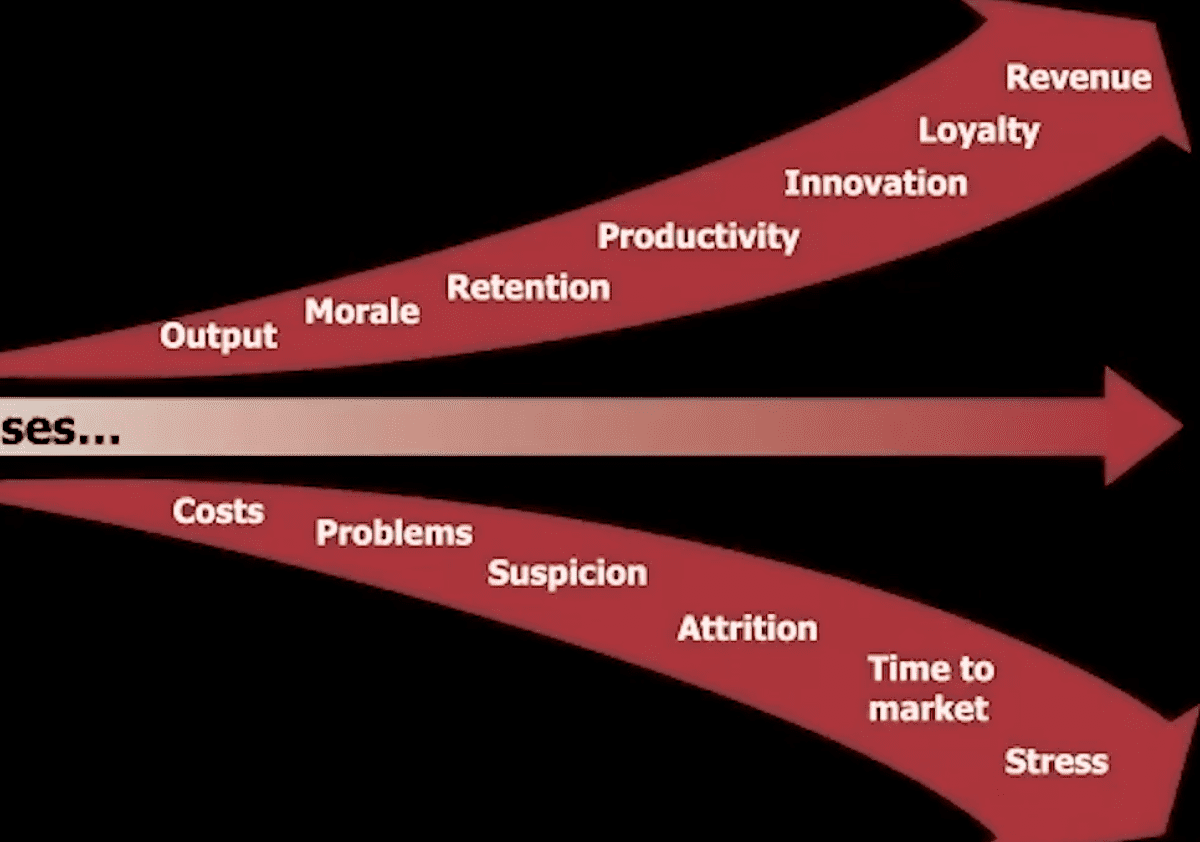
“Distrust is the greatest expense of every leader and organization. Since we are living in a culture of such extreme distrust, 2020, like no other year before, is giving us a tremendous opportunity to rise above the fray and be trustworthy”, said David Horsager, CEO and Best-Selling Author of The Trust Edge in an online summit.
Leaders who build trust with their teams are able to yield the most impactful results. Horsager explains: “Trust is the core of leadership or people wouldn’t follow you. The reason I buy from you is trust. Everything of value is built on trust.
Trust includes consistency
Integrity and character are not enough. Trust is a confident belief in a person, product, or organization. It’s about safety, including consistency (if you’re late all the time I trust you’re late).
Trust is the leading indicator for creativity, performance, and revenue. Lack of trust causes lack of collaboration and creativity, costs, problems, and stress.”
His research “Trust outlook” of 2020 shows that the #1 reason people want to work in an organization is trusted leadership. “People work harder if they would trust their senior leadership. They would trust them more if they would be honest about their mistakes.”
Horsager suggests that leaders seem to have impostor syndrome: if they fear they aren’t good enough it’s harder to admit mistakes. But being a human being includes making mistakes. Being transparent about mistakes might raise team results. How open are you about your mistakes, your doubts, what you don’t know? And, can you say sorry?
Horsager worked with a board of a large corporation who didn’t like each other. He asked: What is a lack of trust costing your team? They estimated the cost on half a billion dollar. When they dug into the issues, the cost was even more.
Positive pillars
Horsager works with 8 pillars of trust: just scan your organization. How are you scoring on these 8 pillars?
1. Clarity
Complexity and ambiguity often cause distrust. So, check: is there clarity of vision, expectations, of goals? Short and actionable is better than lengthy and hyper-complete.
2. Compassion
We trust those who care beyond themselves. That’s why we trust our moms. In organizations we can show compassion by giving appreciation. Do you do that enough?
3. Character
We trust you if you do what is right over what is easy. Do you? What are your examples?
4. Competency
You need to be sure that this person can do the task and is on top of the job. Do you stay fresh and relevant and become better? Are you still learning and improving?
5. Commitment
Do you stay committed even in the face of adversity? We trust those who are truly committed.
6. Connection
How is your ability to connect and collaborate? Connecting on mistakes works great to build trust: it shows you are authentic and real.
Silos and selfishness are the opposite of connection; they hamper collaboration.
7. Contribution
Do you deliver what you promised? Do I get the results, performance, outcomes I expected?
This influences the bottomline. Are we contributing enough?
8. Consistency
Sameness is trusted. Just be predictable and let me know what to expect – and I will trust you.
These 8 pillars all work together to develop organizational trust. Whatever’s the problem, it’s never just a communication issue or lack of employee engagement. Most of these issue are secondary to trust. Having said that, the king of trust might be consistency. Horsager: “Little things done consistently make the difference. It drives big results. Imagine what would happen if you showed consistent compassion – not just once a year.”
Trust is built on consistent Hows
In every interaction you increase or decrease trust – just like you sustain or challenge the culture in every interaction.
For instance, you want a better organizational culture.
Great, how?
– We’ll add more clarity
How?
– We need to communicate more.
How?
How are you going to do that? Keep asking how until you know what you can do right now or tomorrow – and that is clear and visible. The final how must include who, what, when, and where.
These 8 pillars are also building blocks of a positive, productive culture where people and performance thrive. Checking your trust factor is an important step in developing your culture.
- Look at the 8 pillars and self-assess: What do we do well?
- What could we improve?
- How open are you about your mistakes, your doubts, what you don’t know?
- Can you say sorry?
(Source: Leadership for a Changing World online summit, September 2020).
We offer positivity research and practices to develop resilience and collaboration skills. This might help to face the Corona pandemic and other future challenges.
That’s why you can enroll in the online Positive Culture Academy at a discount. Join today!
Check out the next online Culture Change Leadership workshop in 2022. Registration is open – places are limited to guarantee interaction and quality.
